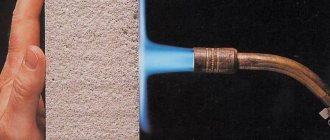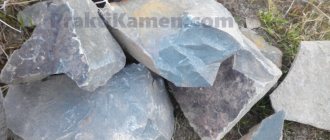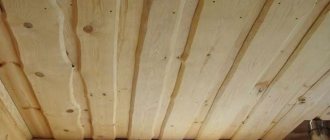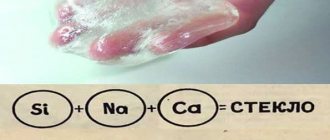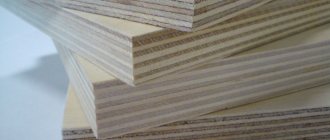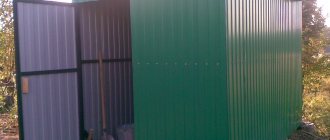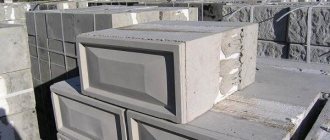During operation, the surfaces of sauna stoves heat up to approximately 400 °C. In this state, they intensively give off heat to the surrounding space. The surfaces are heated. And first of all, the walls that are located in the immediate vicinity of the stove are heated. They are usually made of wood, which begins to char when exposed to high temperatures. This poses a risk of fire. To avoid such troubles, sheet protective materials are used in bathhouses, from which screens and lining are made. In addition to the fact that they must be fireproof, these materials must also provide a certain aesthetics to the room.
Decorative wall panels FIREPROTEC HPL
Decorative wall panels FIREPROTEC HPL, which are characterized by fire resistance, are produced on the basis of high-quality non-combustible FIREPROTEC SML Premium Standard panel or GSP (gypsum particle board). HPL panels for indoor use are used in kindergartens and schools, offices and many other premises to create a comfortable and cozy atmosphere.
Brief historical background
The need for fireproof materials arose early in the development of human culture, when fire appeared. Gradually they became the basis of blast furnaces, steel-smelting and other furnaces. In the middle of the 17th century, refractory bricks began to be produced in Russia. During the reign of Peter I, a larger number of them were made on the basis of Moscow clays.
The cladding of the walls around the stove should not only be heat-resistant, but also match the interior of your room
In the 19th century, fireproof production developed only at metallurgical plants, while in Germany it was organized back in 1810, and in Europe they were already producing fireproof products in full swing. With the entry of the bourgeois class into the economic arena and with the development of industry, Russian scientists also began to work in this direction, and in 1893 the Belokamensk, Bryantsevsky and Latninsky refractory clay factories appeared.
In 1929, research on the fire protection of building materials began to be carried out in research laboratories. Fire-resistant paints were invented for wood coatings and intumescent paints for metal. Methods and rules for treating wood with fire retardant compounds are described in SNiP Sh-V.7−69, and GOST 16363–76 established the use of heat-resistant materials for the stove.
Today, out of 212 countries in the world, only 35 can claim to have a refractory industry, and half of the world's production belongs to the CIS and the USA. The importance of refractories in the economy of our country is very great. Without them, the production of many materials, the construction of various thermal units and space exploration are impossible.
Cement particle boards
Cement particle boards (CPB) are considered an ideal material for sheathing partitions in flammable rooms, as well as the frame of buildings outside. These slabs are used to level subfloors as they have a hard and smooth surface. The slabs are easy to saw, fireproof, resistant to moisture and temperature fluctuations.
Fireproof fender board
A universal solution for protecting the walls of any building can be considered the use of fire-resistant fender boards, which have high performance advantages. It is based on a non-flammable panel covered with HPL plastic, which is difficult to burn. The edges of the panel are treated with a special edge. In addition to its protective function, it is also characterized by excellent decorative properties, so it can decorate any room. high performance indicators, the Impact Board is used in places with high traffic volumes: in kindergartens and schools, hospitals and clinics, train stations and cinemas, supermarkets. This material is environmentally friendly and moisture resistant, hygienic and safe, as well as aesthetically pleasing. The bumper board is available in different colors and sizes.
Fireproof ceilings
In the event of a fire, hot air and flames move upward to the ceiling of the room. Therefore, it is important to take the necessary measures in advance to ensure that a fire ceiling does not become a source of additional dangers for people caught in the fire zone. Non-combustible ceilings can be:
- Painted. Non-combustibility here depends on what material the interfloor ceiling is made of. Concrete is good! The painting was done with silicate or silicone paint - even better! Concrete does not burn. These paints also do not support combustion.
- Wallpapered. With a base on which the wallpaper is glued, as in step 1. The wallpaper itself can also be chosen as heat-resistant - based on fiberglass and metal threads.
- Tensioned. The ceiling, made of polyester impregnated with a fire-retardant compound that protects against fire, is relatively safe. Polyvinyl chloride is also considered heat-resistant, but when exposed to direct fire, it ignites and emits a large amount of gases harmful to humans. It should be used with caution.
- Plasterboard. To be considered non-flammable, such a ceiling must be made of gypsum plasterboard and painted with non-flammable paint.
- Hanging. Such ceilings are made on non-combustible metal frames made of SKL, SML or metal composite elements. The requirement of non-flammability is met.
Sheet material "PVTN"
- Vermiculite boards are non-combustible sheet materials created using expanded vermiculite. They are designed for fire protection in industrial and civil facilities; they are used in metallurgy and the oil industry. Vermiculite boards have:
- Environmental friendliness and fire resistance
- High sound-absorbing and heat-insulating properties
Used for protection:
- from fire in ceilings between floors, cable routes, wood structures, reinforced concrete, steel load-bearing elements;
- thermal protection of fireplaces, chimneys;
- wall cladding of industrial and public facilities;
- increasing fire protection in bank offices, hotels, cinema halls, sports complexes;
- evacuation routes.
Protective screens for furnaces
Protective screens are structures used to insulate the side walls of furnaces. They reduce thermal radiation. Protective screens are made of brick and steel. Mostly such designs are used for metal furnaces.
Oven with metal protective screen
The easiest way to build a protective screen for a furnace with your own hands is from sheets of cast iron and industrial steel. Such screens are the most common. The sheets are installed at a distance of 1-5 cm from the walls of the oven.
SKL panels
Durable and lightweight SCL panels are produced using calcium silicate filler. The panel material does not contain asbestos, so they are non-toxic and environmentally friendly. The sheets are moisture resistant because they do not contain gypsum or hygroscopic materials.
SKL panels are widely popular. These sheets are used for finishing walls, ceilings and floors. Their fire-resistant qualities make them indispensable for protecting screens in high-temperature production, as well as for cladding the walls of bathhouses, finishing fireplaces and stoves.
Despite their special strength, they are also elastic; they can withstand bending up to 13.2 MPa. Thanks to excellent noise insulation properties of up to 44 dB, the panels can be used to cover nightclubs, bars, and the walls of recording studios.
SKL panels contain antibacterial additives, so they are not exposed to fungal diseases and mold.
Conclusion
Thermal insulation materials for stoves are an important component of the stove itself, without which it will not be possible to properly arrange the work.
Also, it is worth adding that it is very important to choose the right material, install it firmly and not overpay a lot of money for it. Fortunately, there are now a huge number of materials and by studying them, you can understand for yourself which one will suit your stove or wall.
Fireproof decorative panels for stoves can not only protect you, but also complement your interior. Experts say that choosing insulating material should be like choosing wallpaper. Sheets, panels or slabs must fit correctly into the overall picture of the room, especially if we are talking about a stove inside the house.
Very often, fireclay slabs for stoves can brighten up your simple interior in the house and add some zest to it.
Heat-resistant insulation for furnaces is not a luxury, it is a necessity. You could even say that this is an important element of the stove, which you cannot do without. When equipping your stove, do not forget to immediately make a list of the necessary materials for thermal insulation of the surface around the stove.
When using stove heating there is a risk of fire. Most often this happens in wooden houses and bathhouses, since the surfaces located next to the heating device become very hot. To prevent disaster, you must follow the operating rules and when organizing construction, be sure to use fire-resistant materials for the walls around the stoves.
SML panels
These magnesite glass sheets are made from magnesium oxide with special additives. Double glass fiber reinforcement imparts rigidity to the sheets.
The operational qualities of LSU are similar to those of SCL. But LSU sheets are tougher and especially durable. This material is most used in places that require increased strength: they are in demand for the manufacture of billboards, roofing and floors.
Like SKL sheets, they are aesthetically pleasing and have antiseptic properties.
the high strength of the panels allows them to be used for reinforcing and finishing foam and aerated concrete, facades, as well as sandwich panels.
OLM production
The production of refractory materials begins with the preparation of raw materials. Often workers manually pick out contaminants and impurities from it. Next, the raw materials are crushed and sifted. Then the powder and additives are mixed in strictly defined dosages. The mixture is formatted, dried under natural or special conditions, and fired.
You should understand! OLM are made from natural and artificial raw materials. The most compatible chemical and mineral substances are selected. The structure, density, porosity and strength of the required parameters are formed using a specific technology.
Fireclay heat-resistant bricks
Fire-resistant products differ according to the types of raw materials:
- Organic components. Such products are made from mineral raw materials and are able to withstand significant temperatures. But not all types. For example, expanded polystyrene is characterized by a low resistance to heat and fire, but it can be used to make a stove or fireplace with low heat.
- Inorganic components. This is the largest group of products, the range of fire resistance of which is large. The category includes mineral and basalt slabs, fiberglass, cellular concrete, vermiculite, honeycomb plastic, perlite. The cost of such products is not high - from 300 rubles per 1 m2.
- Composite compositions. This group includes asbestos-based products: asbestos-lime and asbestos-cement materials. This also includes foamed silica products and some others.
Fiberboard boards
Fiberboard is a bioresistant board made by pressing wood fiber, so-called wood wool, and a binder of inorganic origin. The fiber used is obtained from waste from woodworking machines. These slabs are lightweight, have good acoustics and are fire resistant: the slab shavings are impregnated with cement and are not in any danger from exposure to fire. The material can be easily attached using self-tapping screws and nails, as well as dowels to any surface. It lends itself well to sawing. Composite fiberboard panels consist of two or three layers, the thermal insulation material of the middle layer made of rigid foam or mineral fiber (mineral silicate wool) can be up to 140 mm thick, at which the degree of thermal and sound insulation increases.
Technical and operational characteristics
The main property of such materials is fire resistance, which expresses the temperature at which the deformation process begins. With respect to this value, the effectiveness of their use for certain purposes is considered. In addition to this parameter, others are also considered. Namely, how refractory behaves under the influence of strong heat:
- change in shape and violation of the integrity of the product under load at elevated temperatures;
- compression force parameters when heated, they reflect the stability of the structure;
- Neutral to chemical influences.
On a note! Fire-resistant materials can withstand significant temperatures, the minimum value is +1580 degrees C, the maximum is 3 thousand degrees C. Products that can maintain properties at the highest temperature parameters are called super-fire-resistant.
Fireproof cardboard MKRKL
Gypsum fiber sheet
Gypsum fiber sheets (GFL) are produced by semi-dry pressing of a mixture of gypsum and cellulose waste paper; they are characterized by excellent technical and operational properties. These sheets are durable and have a good degree of fire resistance.
Gypsum fiber sheets are universal in use and are popular and in demand in construction and finishing works. With their help, interior partitions are erected, floors are screeded, suspended and level ceilings are installed, and walls are lined. They are indispensable everywhere as fire protection for any structure. Users value GVL as a facing material used to cover wooden surfaces for its low cost and fire resistance.
OLM for walls
OLM is used in the construction of buildings and structures. Such products are presented in a wide range. Concrete is in high demand; it is accessible, easy to use and safe for human health. Fire-resistant sheet material is often used for cladding walls and ceilings. This finish significantly increases fire safety and is used in facilities with high fire safety requirements. There are many varieties, the most popular types are:
- Cardboards and boards based on fiberglass and asbestos. This is the most cost-effective solution; the materials can withstand exposure to an open flame for half an hour, and heating up to +700 degrees C.
- Vermiculite. The heat resistance of the boards reaches +900 degrees C, they are chemically neutral, resistant to moisture, and do not react with organic solvents.
- Mineral slabs. They are in high demand due to the optimal combination of operational and fire-fighting qualities. They are based on white cement.
- Magnesite. The sheets are resistant to aggressive environments and strong heating.
- Rolls made of basalt fiber. An aluminum heat-reflecting coating is applied to the surface. They can withstand temperatures up to +900 degrees C. The fabric is light and flexible, optimal for installation on structures with complex geometries.
- Terracotta tiles and porcelain tiles. Air- and moisture-permeable tiles with good thermal insulation properties. They are easy to use and maintain; stains can be removed with ordinary detergents. They retain their structure and characteristics for decades and multiple heating cycles. They are both refractories and finishing materials.
There are OLMs that should not be used in rooms where people are, for example, basalt slabs with the addition of formaldehyde resins. When they reach +300 degrees C, they begin to release toxic substances and toxins.
Fireproof high strength brick
Oriented Strand Board
Oriented strand boards (OSB) are produced by pressing chips with an adhesive resin under high pressure, which are manufactured in various thicknesses - from 6 to 30 mm. OSB boards are 3 times stronger than chipboard and MDF boards. Although the plates have such high strength, they are very flexible. Thanks to these properties, they are ideal for finishing and construction work, for example, for cladding ceilings, walls, attics and verandas, they are used in arranging the surface of subfloors, constructing formwork, and are used in cladding wall panels. Thin OSB boards are laid on the floors under the laminate. In recent years, they have begun to be used for low-rise construction. The original texture of OSB attracts designers when decorating interiors. Using OSB, you can get a beautiful and original ceiling design.
Fire-resistant boards are not limited to the above types; there are a lot of them on the building materials market.
Purpose
Burning organic fuel - wood, peat, coal - creates enormous temperatures inside and on the outer surfaces of the stove. Fire regulations provide strict requirements:
- stoves made of ordinary bricks can be located at a distance from the walls exceeding one third of a meter.
- if the stove is made of metal and not finished with special materials (linings), then the minimum distance should be 1 meter;
- The outer surfaces of the stove, protected by a refractory lining, can be located at a shorter distance from the wall than conventional metal ones. The minimum for them is 70 cm.
The wishes of firefighters are not always feasible given the existing sizes and shapes of the home. A way out of this situation can be found by finishing with heat-resistant sheet materials. By enclosing the furnace on all three sides, you can accumulate heat in the resulting space around the furnace without fear of ignition.

